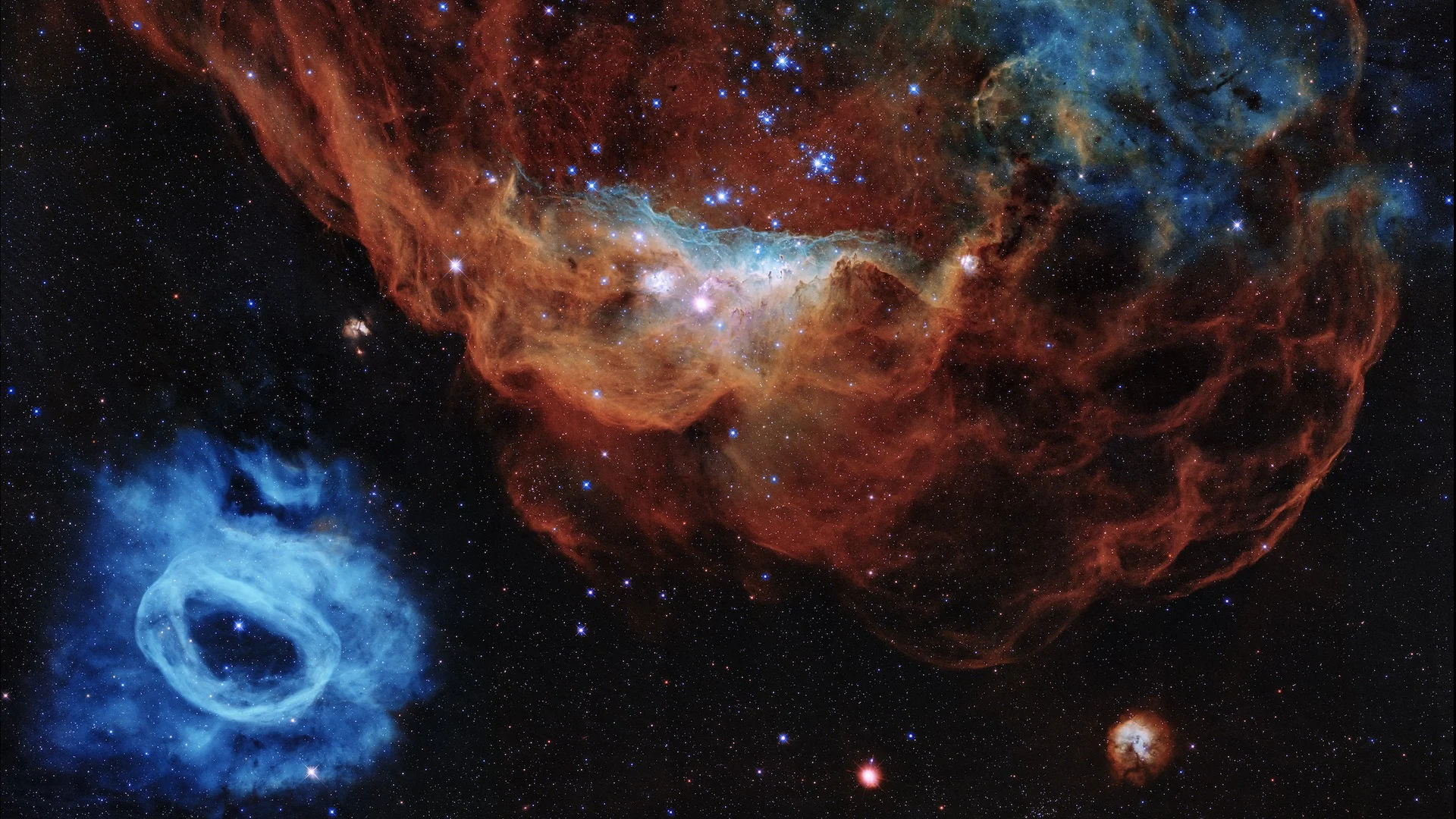
Five Hubble space images to marvel at from the past 30 years!
Thank you, Hubble Space Telescope, for three amazing decades of discovery!
April 24, 2020 is the 30th anniversary of the launch of the Hubble Space Telescope, and we are celebrating this momentous occasion in style!
Capturing around 1.4 million images over the past 30 years, from our own neighborhood to the distant depths of space, Hubble has expanded our view of the universe and it has redefined our place in that universe.
"It was revolutionary to launch such a large telescope 30 years ago, and this astronomy powerhouse is still delivering revolutionary science today," Thomas Zurbuchen, associate administrator for science at NASA Headquarters in Washington, D.C., said in a NASA press release. "Its spectacular images have captured the imagination for decades, and will continue to inspire humanity for years to come."
Here are the top five views of space this marvel of space technology has gifted us with over the past three decades.
THE VEIL NEBULA
First imaged by Hubble in 1997, the Veil Nebula is an immense supernova remnant - threads and strings of gas and dust that continue to expand out into space after the explosion of a massive star, roughly 8,000 years ago.
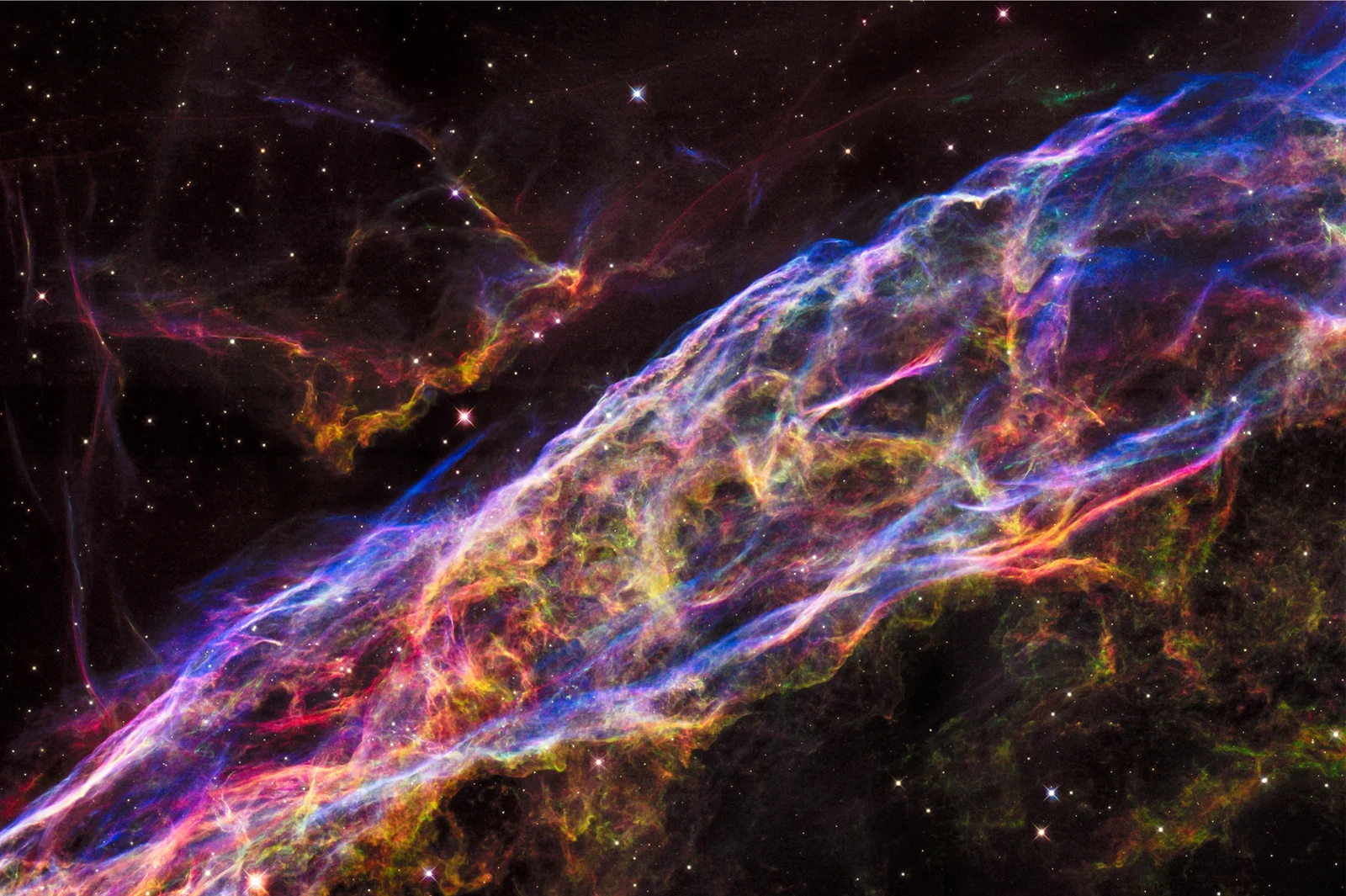
The Veil Nebula supernova remnant, as imaged by Hubble in 2015. In this image, red corresponds to the glow of hydrogen, green from sulfur, and blue from oxygen. The bluish features, outlining the cavity wall, appear smooth and arched in comparison to the fluffy green and red structures. The red glow is from cooler gas that was excited by the shock collision at an earlier time and has subsequently diffused into a more chaotic structure. A few thin, crisp-looking, red filaments arise after gas is swept into the shock wave at speeds of nearly 1 million miles an hour, so fast that it could travel from Earth to the moon in 15 minutes. Credits: NASA, ESA, and the Hubble Heritage Team (STScI/AURA)
While the entire remnant is over 100 light years across (spanning six Full Moons across the sky, according to HubbleSite), this section that Hubble zoomed in on in 2015 is just two light years from side to side.
According to Hubble: "This close-up look unveils wisps of gas, which are all that remain of what was once a star 20 times more massive than our sun. The fast-moving blast wave from the ancient explosion is plowing into a wall of cool, denser interstellar gas, emitting light. The nebula lies along the edge of a large bubble of low-density gas that was blown into space by the dying star prior to its self-detonation."
SITH STAR
Hubble's imagery is incredibly valuable, not only for the study of the universe, but also simply for providing us with views of the amazing variety on display out in space. Once in awhile, that variety lines up with our own creative works here on Earth, in somewhat whimsical ways.
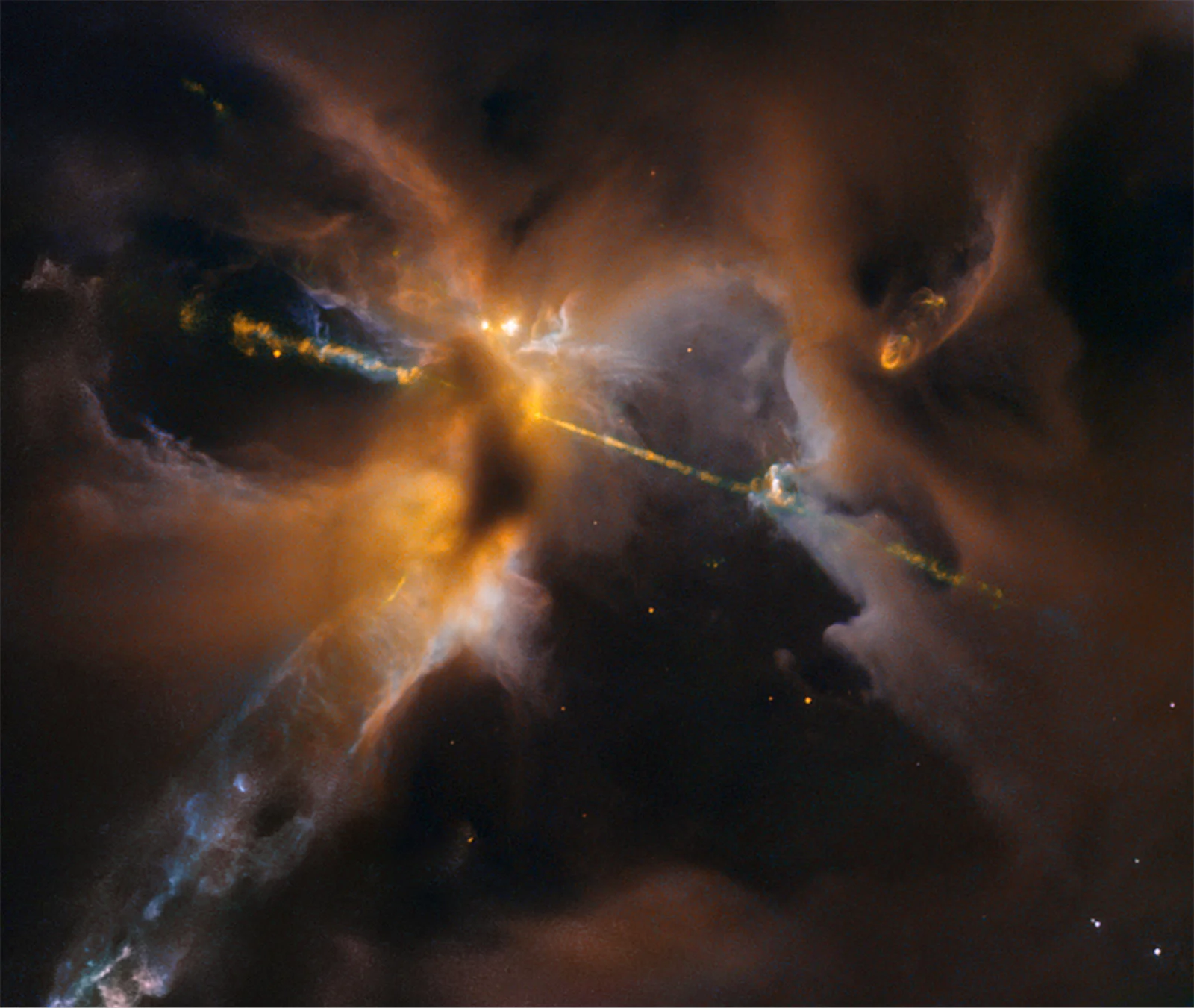
This Herbig-Haro object captured by Hubble in 2015 was released timed with Star Wars: The Force Awakens, due to the Sith-like appearance of the cloaked star with its double-lightsaber-like twin jets of superheated material. Credit: NASA and ESA; Acknowledgment: NASA, ESA, the Hubble Heritage (STScI/AURA)/Hubble-Europe (ESA) Collaboration, D. Padgett (GSFC), T. Megeath (University of Toledo), and B. Reipurth (University of Hawaii)
This "Sith Star" is actually real. It is technically called Herbig-Haro object 24, and it formed as a nebula of gas and dust collapsed to form a protostar.
According to Hubble: "When stars form within giant clouds of cool molecular hydrogen, some of the surrounding material collapses under gravity to form a rotating, flattened disk encircling the newborn star."
"Though planets will later congeal in the disk, at this early stage the protostar is feeding on the disk with a Jabba-like appetite. Gas from the disk rains down onto the protostar and engorges it. Superheated material spills away and is shot outward from the star in opposite directions along an uncluttered escape route – the star's rotation axis."
"Shock fronts develop along the jets and heat the surrounding gas to thousands of degrees Fahrenheit. The jets collide with the surrounding gas and dust and clear vast spaces, like a stream of water plowing into a hill of sand. The shock fronts form tangled, knotted clumps of nebulosity and are collectively known as Herbig-Haro (HH) objects. The prominent HH object shown in this image is HH 24."
THE WHIRLPOOL GALAXY, M51
Over 31 million light years from Earth, a collection of 100 billion stars forms an enormous 'whirlpool' in space, angled just right so that we look straight 'down' into it. This is Messier 51, better known as the Whirlpool Galaxy, and according to Hubble it is "one of astronomy's galactic darlings."
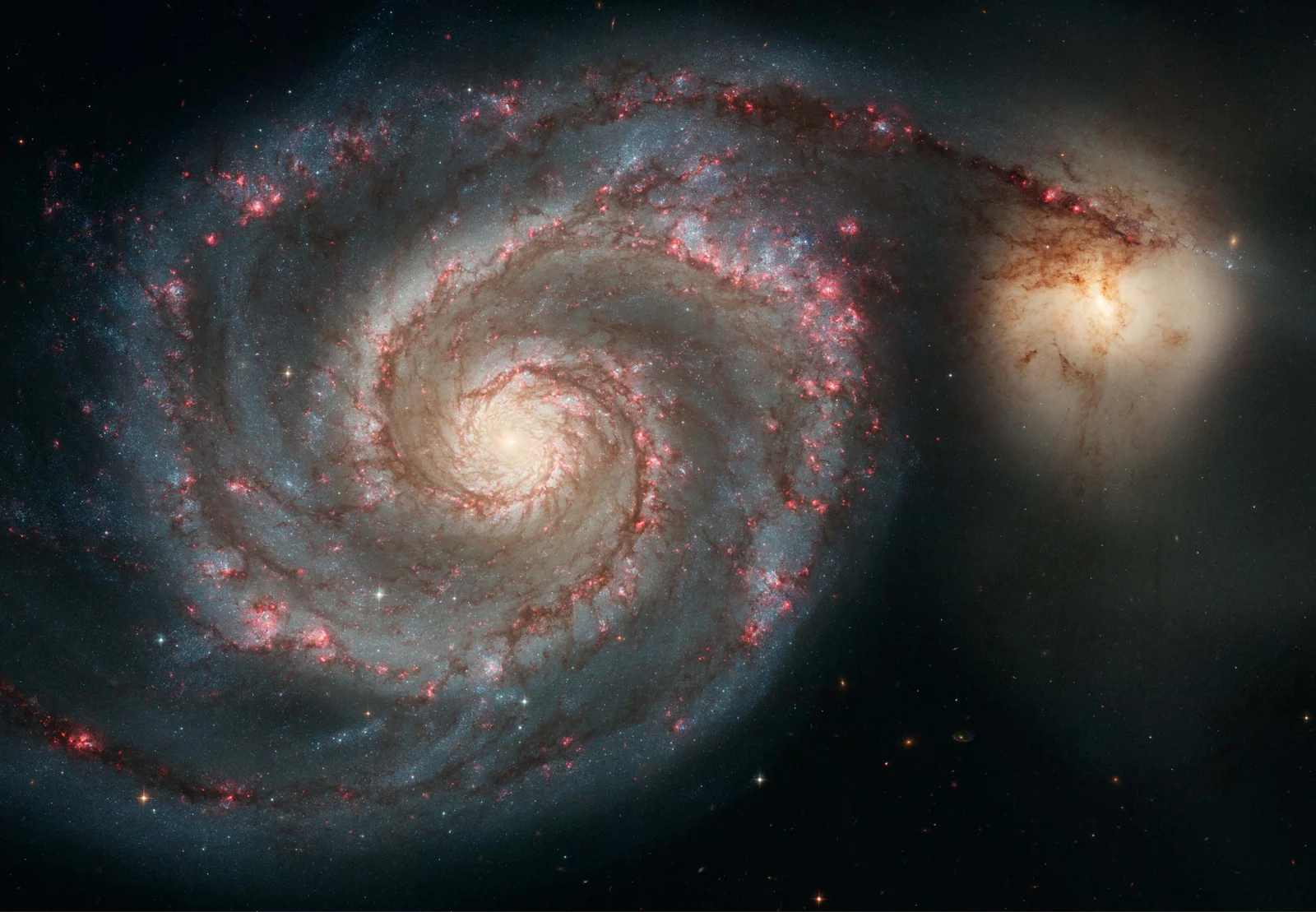
Hubble's capture of M51 from 2005. Credits: NASA, ESA, S. Beckwith (STScI), and The Hubble Heritage Team (STScI/AURA)
According to Hubble: "The Whirlpool's most striking feature is its two curving arms, a hallmark of so-called grand-design spiral galaxies. Many spiral galaxies possess numerous, loosely shaped arms which make their spiral structure less pronounced. These arms serve an important purpose in spiral galaxies. They are star-formation factories, compressing hydrogen gas and creating clusters of new stars. In the Whirlpool, the assembly line begins with the dark clouds of gas on the inner edge, then moves to bright pink star-forming regions, and ends with the brilliant blue star clusters along the outer edge."
PILLARS OF CREATION
Another example of Hubble's power to focus in on the fine details of the universe is this image from the Eagle Nebula.
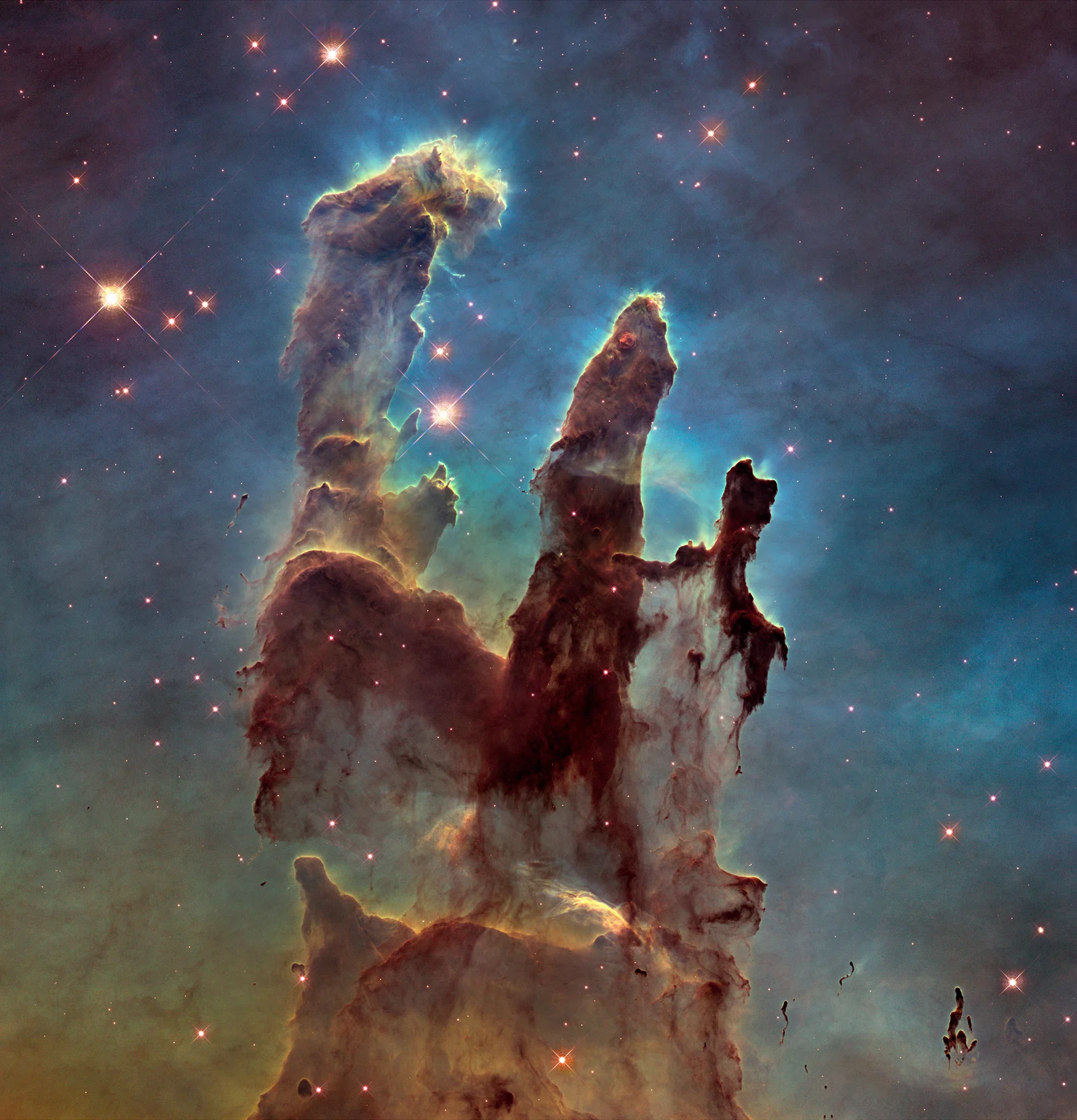
*This false-colour image of the Eagle Nebula's 'Pillars of Creation" reveals the chemical elements contained within. Oxygen emission is blue, sulfur is orange, and hydrogen and nitrogen are green. Credits: NASA, ESA, and the Hubble Heritage Team (STScI/AURA)
While the nebula is an immense structure, zooming in on its core reveals these pillars of dust and gas that were dubbed "The Pillars of Creation", due to the star-forming that is likely going on within them.
According to Hubble: "The pillars are bathed in the blistering ultraviolet light from a grouping of young, massive stars located off the top of the image. Streamers of gas can be seen bleeding off the pillars as the intense radiation heats and evaporates it into space. Denser regions of the pillars are shadowing material beneath them from the powerful radiation. Stars are being born deep inside the pillars, which are made of cold hydrogen gas laced with dust. The pillars are part of a small region of the Eagle Nebula, a vast star-forming region 6,500 light-years from Earth."
Due to the Eagle Nebula's distance from us, we are seeing the Pillars as they were at least 5,500 years ago, and sadly, astronomers estimate that they are likely completely gone by now, due to the star-forming processes blowing the pillars apart. All the more reason to enjoy the view we have now!
HUBBLE ULTRA DEEP FIELD
Nearly 20 years ago, astronomers decided to take a gamble with the Hubble Space Telescope. They located a tiny region of space that appeared completely devoid of any objects - stars, nebulae, galaxies, etc - and they pointed the telescope at that region, again and again, over months.
Since many objects in space are only revealed to us once we gather enough observations, so that we can stack image upon image to combine the photons captured by each, the hope was that they would actually find something in that tiny area of blankness.
Their gamble paid off. In fact, they hit the astronomical jackpot, as that small swatch of space was found to contain an estimated 10,000 galaxies!
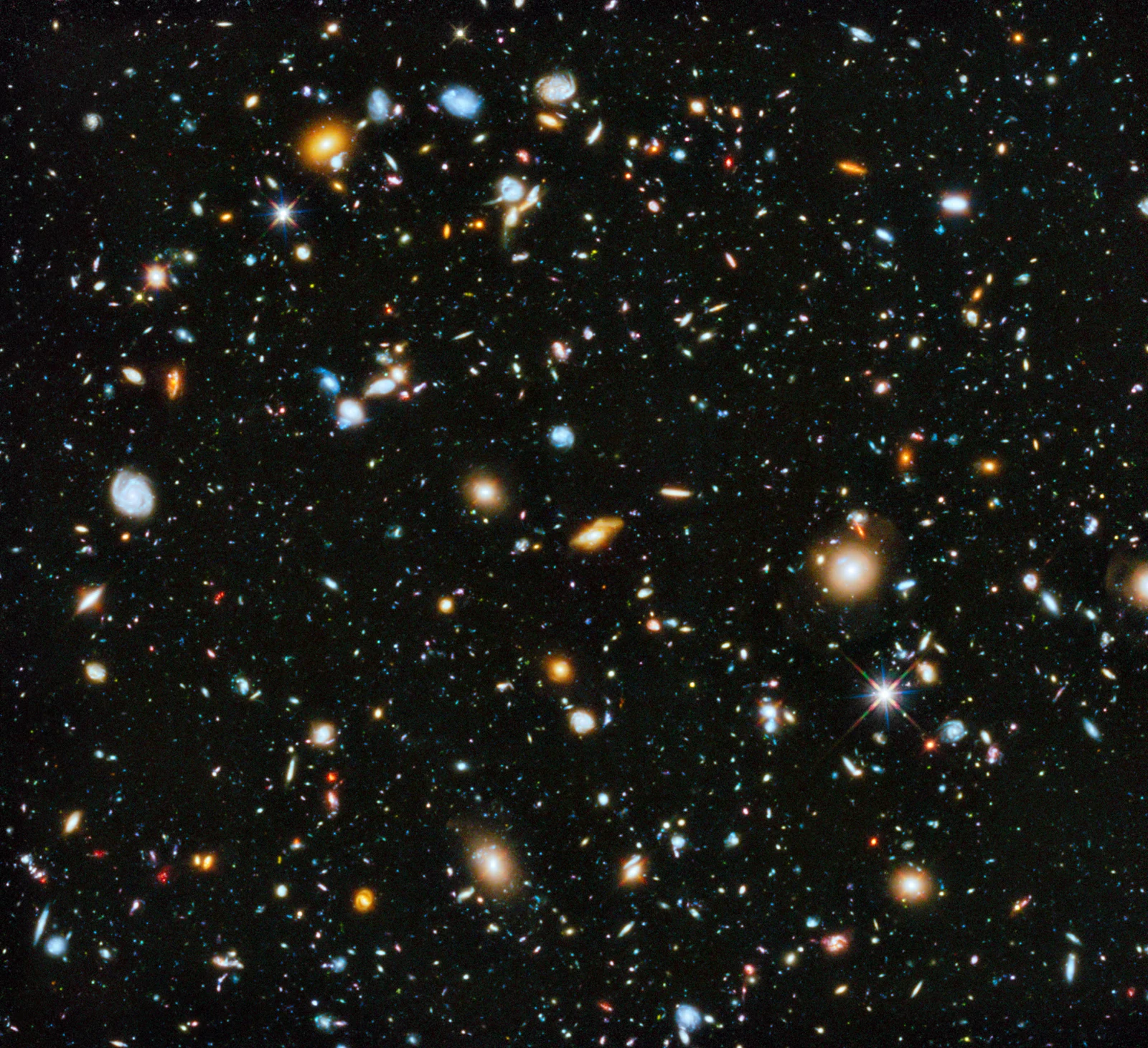
This Ultra Deep Field view combines observations from over 10 years of Hubble staring at the same tiny section of space, in all wavelengths of light the telescope can gather, from infrared, visible and ultraviolet. Credits: NASA, ESA, H. Teplitz and M. Rafelski (IPAC/Caltech), A. Koekemoer (STScI), R. Windhorst (Arizona State University), and Z. Levay (STScI)
According to Hubble: "Astronomers previously studied the Hubble Ultra Deep Field (HUDF) in visible and near-infrared light in a series of images captured from 2003 to 2009. The HUDF shows a small section of space in the southern-hemisphere constellation Fornax. Now, using ultraviolet light, astronomers have combined the full range of colors available to Hubble, stretching all the way from ultraviolet to near-infrared light. The resulting image – made from 841 orbits of telescope viewing time – contains approximately 10,000 galaxies, extending back in time to within a few hundred million years of the big bang."
BONUS: HUBBLE'S 30TH ANNIVERSARY IMAGE

In this Hubble portrait, the giant red nebula (NGC 2014) and its smaller blue neighbor (NGC 2020) are part of a vast star-forming region in the Large Magellanic Cloud, a satellite galaxy of the Milky Way, located 163,000 light-years away. Credits: NASA, ESA and STScI
According to Hubble: "The image is nicknamed the "Cosmic Reef," because NGC 2014 resembles part of a coral reef floating in a vast sea of stars. Some of the stars in NGC 2014 are monsters. The nebula's sparkling centerpiece is a grouping of bright, hefty stars, each 10 to 20 times more massive than our Sun. The seemingly isolated blue nebula at lower left (NGC 2020) has been created by a solitary mammoth star 200,000 times brighter than our Sun. The blue gas was ejected by the star through a series of eruptive events during which it lost part of its outer envelope of material."
See the rest of Hubble's 30th anniversary collection, and read about its amazing achievements, on their website.
